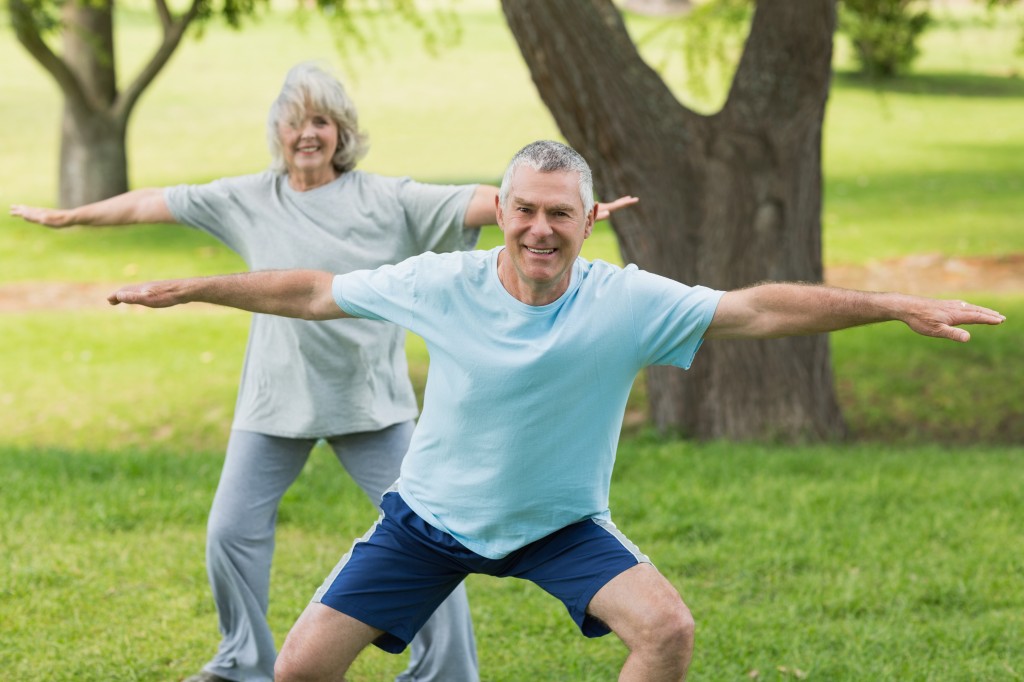It seems that the older we get, the less active we become. But why is this happening? An emerging base of research shows that the biggest deterrent to exercise among the over 60s is the belief that they’re too sick, too tired, or too out-of-shape to exercise.
It’s what we like to classify under the ”it’s too risky for me’’ excuse. Many older adults are simply worried that exercise can make their existing condition worse.
But is it really too late to improve your health with exercise once you are over the age of 60? Absolutely not. You can train an older body and successfully so – there are many examples of people starting with regular exercise only after they have retired from their 9 to 5 jobs.

Exercise can make you stronger, prevent muscle loss, improve balance, lift your mood, boost memory and ease the symptoms of existing conditions.
But How Much is Too Much?
We all intuitively know that exercise is good. Research even shows us that vigorous activities could help us live longer. However, it is also possible to do too much of a good thing: this is called over-exercising, and it can cause everything from mood disorders to boredom.
One of the keys with exercising, regardless of age, is to listen to your body carefully. For instance, older adults above 60 years, who are generally physically fit and have no underlying conditions that limit their mobility, should do:
- At least 2 hours of moderate exercise such as walking or cycling every week, plus strength exercises two days a week to work on all body muscles (hips, legs, back, chest, abdomen, arms, and shoulders).
- At least 1 hour of vigorous exercise such as running or engaging in tasking games such as tennis, plus strength exercises two days a week to work on all body muscles (hips, legs, back, chest, abdomen, arms, and shoulders).
- A mix of moderate and vigorous exercise every week. For instance, two half-hour runs, plus two 30 minutes of jogging equates to 120 minutes of exercise, as well as strength exercises two days a week to work on all body muscles (hips, legs, back, chest, abdomen, arms, and shoulders).
A generally accepted rule of thumb is that 10 minutes of vigorous exercise (running) provides the same benefits as 20 minutes of moderate exercise (walking).
Additionally, older people should try to break up long periods of sitting with moderate activities, no matter how much exercise they do.
Older adults with weak legs, poor balance, and other medical conditions should particularly be active at least two days every week to improve coordination and balance. Examples of exercises they can do include tai chi, yoga, and dancing.
What Exercises Are Considered Moderate?
Examples of activities that count as moderate exercise include:
- Walking
- Dancing
- Volleyball
- Double Tennis
- Working Out on Spin Bikes
- Riding a Bike on Level Ground
- Pushing a Lawn Mower
Moderate exercise will make you breathe faster and increase your heart rate. The best way to tell if you’re doing moderate exercise is if you can talk well, but can’t sing the words to a song without pausing to catch your breath.
House chores such as cooking and cleaning don’t count towards daily exercise because the effort made isn’t enough to increase your heart rate. They are however important because they break up long periods of sitting.
What Exercises Are Considered Vigorous?
It has been proven time and again that vigorous exercises can bring more health benefits than moderate exercises. Examples of vigorous exercises include:
- Jogging
- Running
- Football
- Single Tennis
- Swimming
- Martial Arts
- Riding a Bike Uphill
Vigorous exercise will make you breathe fast and hard. When doing a vigorous activity, you won’t be able to talk more than a few words without gasping for breath. In general, 60 minutes of vigorous exercise can offer the same health benefits as 120 minutes of moderate exercise.
What Activities Are Considered Strength Exercises?
Besides moderate and vigorous exercises, older adults need to strength exercises at least two days every week to strengthen their muscles. These types of exercises help them from losing muscle as they age. There are many ways to strengthen your muscles, either at home or at the gym. Examples include:
- Yoga
- Pushups
- Situps
- Digging
- Shovelling
- Lifting Weights
The activities you choose should engage all your major muscle groups including (hips, legs, back, chest, abdomen, arms, and shoulders). Try to do at least eight repetitions on each activity to count as 1 set, but to gain even better health benefits, do 2 or 3 sets of each strengthening activity.
Takeaway
As an adult aged 60 and above, regular exercise is one of the most important things you can do for your body. It can help prevent many of the health problems that often accompany old age.
It also strengthens your muscles so you can continue doing your daily activities without being dependent on other people.